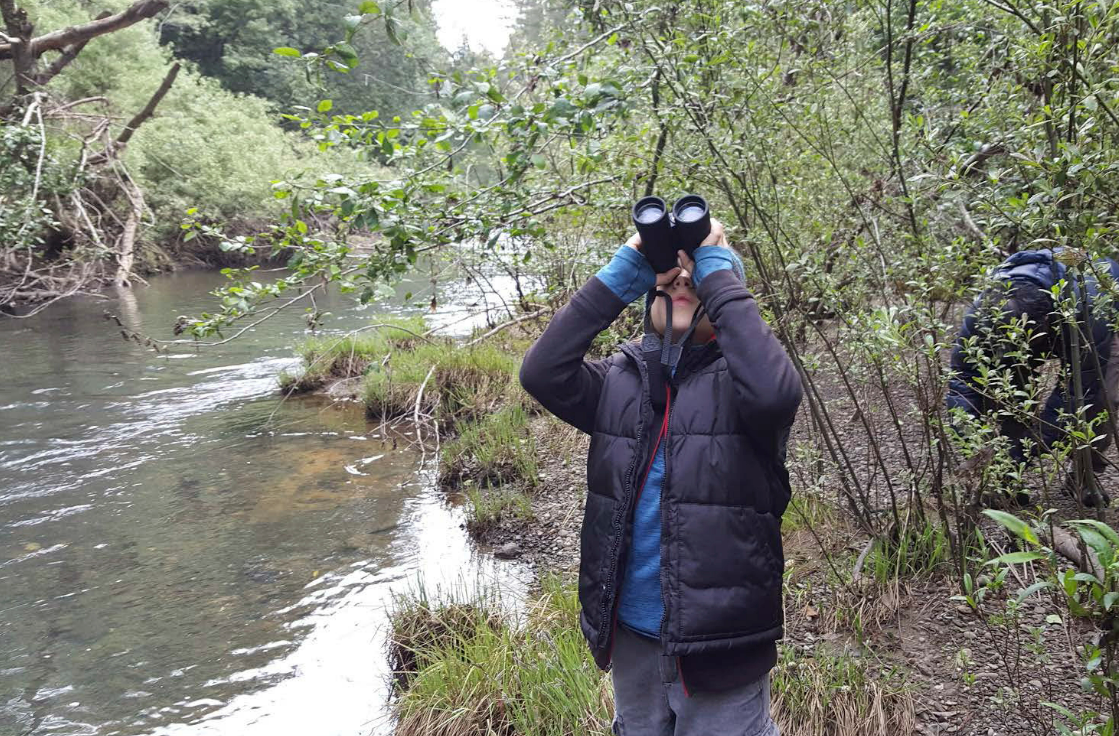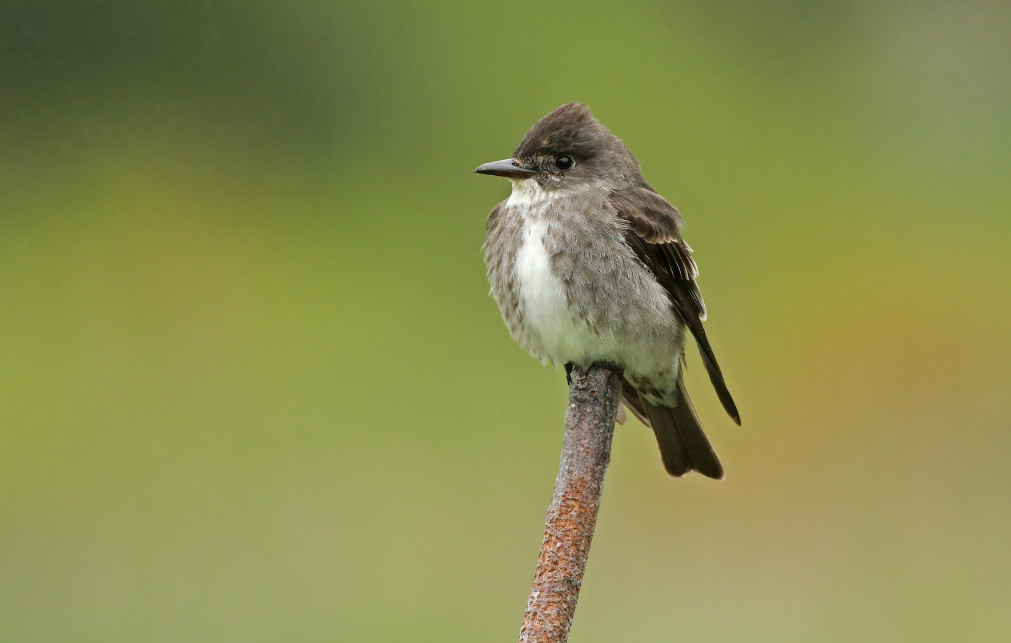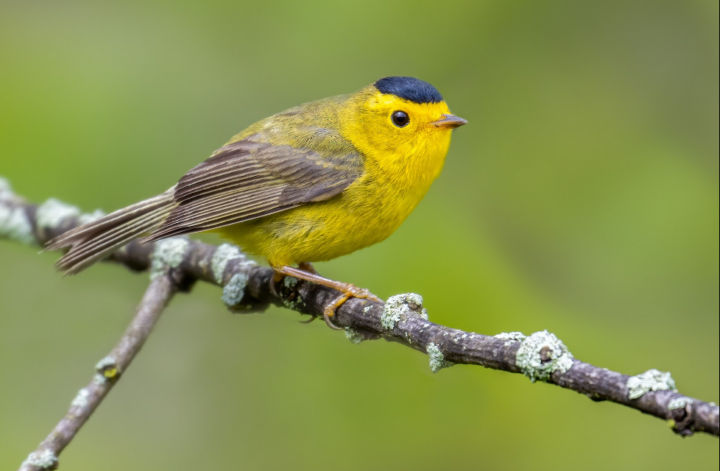Mendocino Land Trust

Mendocino Land Trust
Why Bird Conservation?
The Big River, which runs through the Mendocino Headlands State Park, is home to both a variety of ecosystems — including forests, estuaries, and wetlands — and species of birds. Located along the Pacific Flyway, the Big River area is critical for birds migrating along the West coast. The Mendocino Land Trust (MLT) first acquired over 7,000 acres of land near the Big River in 2002 and has since transferred the land to California State Parks.
Shortly after acquiring the land, MLT embarked on an annual tradition of conducting breeding bird surveys which had run from 2003 to 2019. Through this process, MLT was able to engage volunteers with opportunities to participate in citizen science and share important data with stakeholders, such as the Mendocino Coast Audubon Society and California State Parks.
Nicolet Houtz, Conservation Project Manager for MLT, says the surveys had modest beginnings, but the continuation of data collection created new opportunities for learning about the ecosystem and engaging with the community. “Initially, the intent was to gather baseline data, no one was certain how long it would actually go on,” Houtz said. “But there was a lot of interest, especially from volunteers early on, and it got people into parts of the park that weren’t as easily accessible. As we started to collect years of data there was much more of an effort to do these surveys to better understand what might be changing from year to year.”
Since MLT’s acquisition of the Big River area, much of the land has been transitioning from a logged forest to a preserved natural area. As the ecosystem continues to change, both as a result of natural forest succession and climate change, this baseline of information about birds is an important resource for future management decisions.
Spotlight Resources: eBird, All About Birds, and Citizen Science Volunteers

MLT had been collecting bird species data through point count surveys for over a decade, but eBird, a free online bird checklist program, became a novel tool for easy data dissemination. During its Cornell Land Trust Small Grant project in 2018, MLT uploaded all of the data collected through the Big River Bird Surveys from 2003-2019 to the eBird database, increasing the accessibility of this information for other organizations and enabling scientists to use these data in their modeling efforts to show abundance and trends of bird species in this area of California. Since California State Parks now owns the acreage near Big River where the surveys were conducted, this easily accessible and well organized data is especially important for the inclusion of bird data in their management of the land.
MLT worked with citizen science volunteers to conduct point count surveys that were entered into eBird. Point count surveys record all birds detected by sight and sound by a single observer located at a fixed position during a specified period of time. Prior to the surveys, MLT offered training on bird identification for volunteers, many of whom were not experienced birders. The annual training events and point count surveys offered a new means of connecting with the Big River area, attracting community members to the organization and their management work.
Houtz said, “I think the surveys really interested a lot of people and got them out to places they wouldn’t normally be able to access. Being there in the morning during surveys is a special time, it’s quiet enough to hear a chorus of birds and experience the Big River area in a different way than they have in the past.”
In the event that MLT staff and/or citizen science volunteers could not identify a bird during the point count surveys, the bird’s appearance and song would be recorded. MLT staff would then use Cornell’s All About Birds guide and identification tools, such as Merlin, to determine which bird species the staff or volunteers had spotted earlier, Houtz said. This means birds that otherwise wouldn’t be included in the point count survey dataset could be identified once the team returned from the field. These programs served as important training tools, helping observers become more familiar with bird species in the region.
Making the Connection
MLT led point count surveys over three routes stretching approximately 10 miles. The routes were representative of the variety of ecosystems found along the Big River and varied in level of accessibility for recreation. This, in conjunction with a long timeframe, meant that the data was especially useful for understanding the presence of certain bird species.
For example, the surveys showed that the Olive-sided Flycatcher, a bird species with declining population trends, increased over time on one survey route, but not the other two. Observations such as these can suggest that this survey route may provide better habitat: a conclusion that can inform future management.

Identifying patterns or changes in the presence of certain bird species is especially important in the face of climate change. Coastlines, such as the Mendocino region, will continue to experience sea-level rise that will impact coastal bird species and habitat. Baseline data is crucial for understanding the changes bird populations are undergoing as well as the implications of shrinking bird habitat.
A baseline dataset can also shed light on changing behaviors of migratory birds, such as the timing of their migration, Houtz said. For example, the surveys found Wilson’s Warbler, a small migratory bird that is suffering from steep population declines, actually increased on all three of the survey routes. This suggests the Big River area provides sufficient habitat for Wilson’s Warblers during breeding and/or migration, which can be considered in future management.
Next Steps
MLT no longer owns or manages the Big River area property, but the parcel is now part of the Mendocino Headlands State Park owned by California State Parks. All of the data collected through the Big River breeding surveys were shared with California State Parks for them to consider in their management of the property.
As a result of this experience, MLT now regularly considers birds in their conservation work. Houtz says that when working with landowners to secure conservation easements, MLT often prioritizes the conservation of oak woodlands, which are an incredibly important habitat for many species of birds in the region.
“It’s not as easy as conserve this or that — a lot of it has to do with funding. That’s why prioritizing certain habitats for birds is an important part of the decision-making process.”


